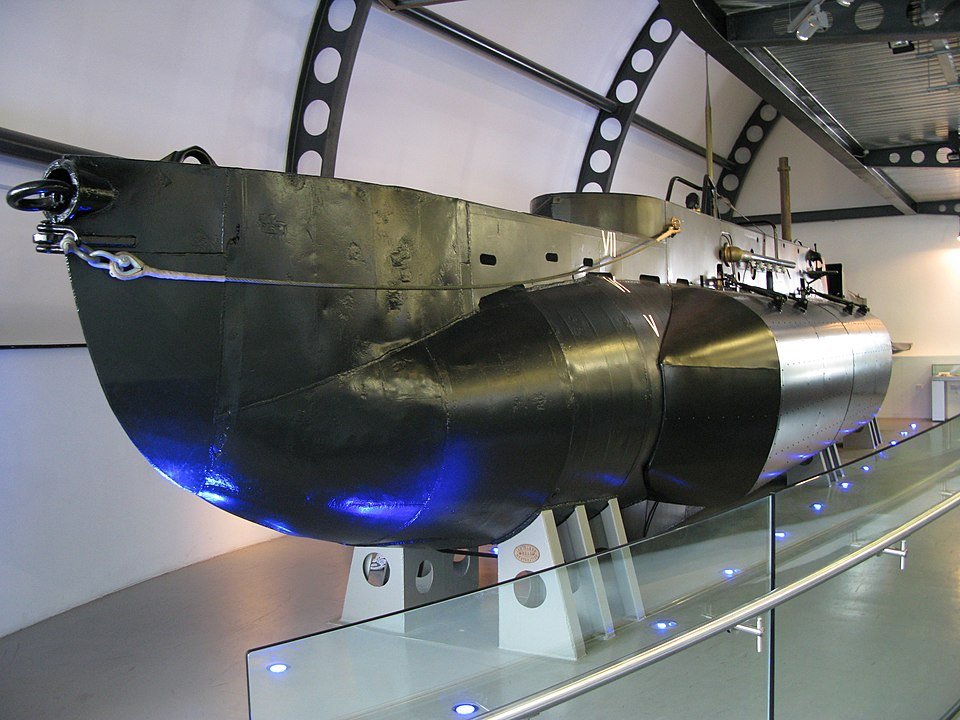The X-Class Submarines and Operation Source: The Tiny Craft That Helped Bring Down a Giant
During the Second World War, the threat posed by the German battleships Tirpitz, Scharnhorst and Lutzow loomed large over Allied naval operations in the North Atlantic. As the sister ship of the infamous Bismarck, Tirpitz was one of the largest and most powerful battleships ever built, a floating fortress stationed in the fjords of occupied Norway. Her very presence there effectively neutralised Royal Navy assets and diverted vast resources to ensuring Allied shipping kept out of her reach. It wasn’t just her guns that threatened Allied convoys, but the strategic nightmare she represented.
To counter this, the Royal Navy launched a daring and unconventional plan: Operation Source. At the heart of this mission were a group of small, experimental craft — the X-class midget submarines — that were to earn a special place in naval history.
Operation Source: The Mission to Cripple the Tirpitz, the Scharnhorst and the Lutzow
Operation Source, conceived in 1943, was one of the most audacious underwater operations of the war. The goal was simple in theory but almost impossible in execution: to infiltrate the heavily guarded fjords of Norway and disable Tirpitz, Scharnhorst and Lutzow using midget submarines. The X-craft were only 15.5 metres long and crewed by four men. Despite their cramped conditions and primitive controls, these mini-subs were designed to carry two large explosive charges — each weighing two tons — to be placed directly under enemy ships.
On 20 September 1943, six X-craft set out, towed by conventional submarines, across the North Sea to their target in the Kåfjord, a remote arm of the Altafjord in northern Norway. Each had its own assigned ship. It was a perilous journey. Mechanical failure, navigational hazards, and enemy defences led to the loss or capture of several of the submarines. Only X6 and X7 reached the Tirpitz and laid their charges beneath her hull. Though neither survived the mission intact, their explosive payloads did their job. The Tirpitz was crippled, temporarily out of action for six months, and never fully regained her operational status.
The Role of X24: A Separate Victory
Although X24 was not directly involved in the attack on the Tirpitz, it played a crucial role in the broader context of Operation Source and subsequent follow-up missions. Its mission in April 1944, however, targeted another vital component of the German war machine: the Laksevåg floating dock in Bergen, Norway. Intelligence had revealed that the dock was used for repairing U-boats and other German warships. Destroying it would hamper enemy naval capabilities in the region.
X24 navigated into Bergen harbour, avoiding minefields, nets, and patrols. It successfully laid charges beneath the massive floating dock and escaped undetected. The resulting explosion destroyed the dock completely, dealing a severe blow to the German Kriegsmarine.
A Legacy of Bravery and Ingenuity
X24’s mission in Bergen was a textbook example of stealth, determination, and technical precision — all qualities that defined the X-craft operations. While not directly involved in the disabling of the Tirpitz, its success helped sustain the momentum of Operation Source and demonstrated the feasibility of using mini-submarines for surgical strikes on high-value targets. These missions pushed the limits of what submariners could achieve in hostile waters.
Importantly, the impact of X24 and its sister craft was not limited to physical damage alone. The psychological effect on the German navy was significant. No longer could their warships rest safely in fjords or harbours. The Royal Navy had proven that nowhere was truly safe.
The Tirpitz herself, though repaired after the September 1943 attack, never returned to full operational status. Eventually, she was sunk for good in November 1944 by Royal Air Force Lancaster bombers using “Tallboy” bombs. But Operation Source, and the X-craft, had made that final attack possible. They ensured Tirpitz remained a crippled, defensive hulk — no longer the deadly predator she was built to be.
Conclusion
The story of X24 is a reminder that in warfare, size is not always the deciding factor. While the Tirpitz towered in might and menace, it was tiny submarines like X24 that undermined the foundation of German naval power in the North. Their operations required nerves of steel, technical prowess, and a level of bravery that still commands admiration today.
Today, X24 is preserved and displayed at the Royal Navy Submarine Museum in Gosport, a tribute to the ingenuity and courage of the men who fought beneath the waves. Though often overshadowed by the more direct attacks on the Tirpitz, X24’s mission helped turn the tide in the secret war below the sea — proving that even the smallest vessel can make a titanic difference.
Photo credit: Geni

